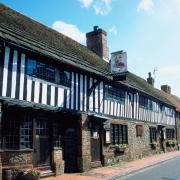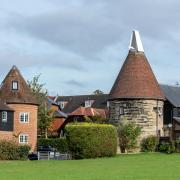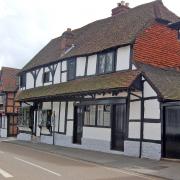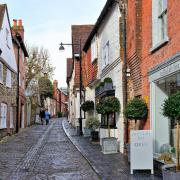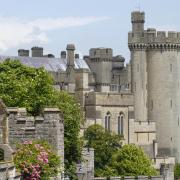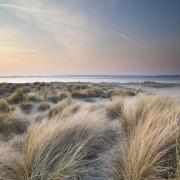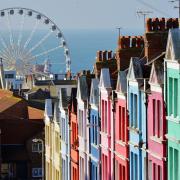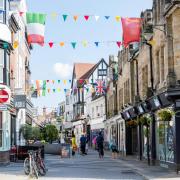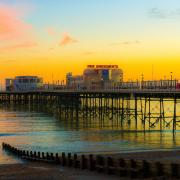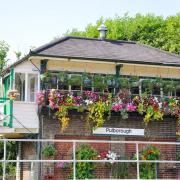Solution for the ‘That House of Art’ piece by Tony Ward in the Sussex Life March issue
• February solution• January solution***
That House of Art - Where is it?
From border castle to Sussex mansion,
forced South by a cautious Queen.
Four hundred years
and still under a father’s watchful eye.
Inside,
below stairs, in new hands,
old traditions,
in Mrs. Brown’s kitchens.
Above stairs, in ancient hand,
a different cook’s tale.
Outside,
her namesake reclaimed past lands.
Parterres to pleasure grounds,
perfected nature.
Beyond,
a distant church,
burnished waters under a setting sun,
sounds of leather on willow,
of clashing antlers,
frozen in time by the painter of light,
another window for that house of art.
***
Solution - Petworth House and Park - Petworth, West Sussex
Explanation of embedded clues
Petworth House, one of the Percy family’s earliest possessions, became their permanent home in the late 1500’s after Queen Elizabeth I confined them to the South of England. They were forced to leave their Northern estates as Elizabeth I suspected they may have been in league with her rival, Mary, Queen of Scots. Henry Percy, 1st Earl of Northumberland, had inherited Egremont Castle and estates in 1369, and his successors have kept the Lord Egremont title to the present day. Petworth House and Park was handed over to the National Trust in 1947. For the past 250 years it had been in the hands, by inheritance, of the Wyndham family. The current Lord and Lady Egremont still live in the South Wing, still under the ‘watchful eye’ of the portrait of Elizabeth 1’s father, Henry VIII (1491 – 1547). The portrait, by an unknown artist in the style of Hans Holbein (1497/8 – 1543), may well have been painted in Henry’s lifetime or soon after his death. It is now in the main section of the house open to the public, in the ‘Carved Room’, so named because of the outstanding wood carvings by Grinling Gibbons and his associates. These include the portrait’s elaborate frame added sometime after 1690 during the construction of the original room. The room you see today is a result of the remodelling and doubling in size by the 3rd Earl about 100 years later.
Below stairs, the kitchen still contains the “batterie de cuisine”, over 1,000 copper saucepans and other utensils, which would have been in use in the days when the house and park was tended by about 40 live-in servants. ‘Mrs. Brown’s Kitchen’ is the name of the National Trust event weekends demonstrating the cooking of traditional recipes, but thankfully not resulting in the cleaning of all that copper! Above stairs, in the Somerset Room, is a 1410 handwritten copy of Geoffrey Chaucer’s Canterbury Tales (‘The Leconfield Chaucer’), one of which is ‘The Cook’s Tale’.
Outside, the Park, originally the site of the medieval village of Tillington, has undergone a series of transformations down the centuries. In 2013 an Archaeology of the Park project saw over 100 volunteer assistant archaeologists digging into the past 800 years of the life of the grounds, including searching for the site of a banqueting house built by Henry VIII during the time that he owned the Park and in use in the 16th Century. In the succeeding centuries the grounds first became vast formal gardens, a particular feature of which were the Parterres, before a ‘natural’ look was re-instated by Lancelot ‘Capability’ Brown in the 1750’s who landscaped the existing 700-acre Deer Park, complete with Doric Temple, and created the ‘Pleasure Grounds’, a 30-acre woodland garden.
The present late 17th Century mansion was inherited in 1765 by the art-loving 3rd Earl of Egremont, and so began a ‘golden age’. A keen collector and patron, he was host to many contemporary painters and sculptors, giving them facilities for working in the house and grounds. Both J.M.W. Turner (1775 – 1851) and John Constable (1776 – 1837), at separate times, used the old library as a Studio. The Earl commissioned Turner to paint scenes at or near Petworth as groups of panels for the Dining Room. The artist produced two sets of paintings, one of which is still in the house and the other is now in Room 102 in the Clore Gallery at the Tate Gallery in London. The last verse of the poem refers to the picture “Petworth Park: Tillington Church in the distance”. The version at Petworth shows a cricket match and stags fighting. Turner liked to get away from the smoke of London, fishing in the lake and going for walks in the Park, often setting out at sunset. “The Lake, Petworth: Sunset” pictures the scene. Because of his skill in capturing light effects right across his range of classical, landscape and maritime subjects he became known as ’the painter of light’.
Turner’s works however just added to an existing wide-ranging art collection, what John Constable referred to as ‘that house of art’ during his two visits in 1834. Constable himself produced around 40 watercolours and drawings in and around Petworth. These are now mainly in the V&A and the British Museum in London. The internationally important art collection still at Petworth is one of the National Trust’s finest collections of pictures. Artists represented include Titian, Hieronymous Bosch, Claude Lorrain, Jacob van Ruisdael, David Teniers, Sir Anthony Van Dyke, Sir Peter Lely, Sir Godfrey Kneller, Sir Joshua Reynolds, William Blake, and Thomas Gainsborough.
Acknowledgement of sources:
National Trust Handbook and Website.
‘Canterbury Tales ’, (‘The Cook’s Prologue and Tale’), Geoffrey Chaucer, various editions available.
‘The Art Book’, Phaidon, 1994.
‘The Turner Collection in the Clore Gallery’, (Pages 65 – 73 Room 102, Petworth and East Cowes), The Tate Gallery, 1987.
‘Turner at Petworth’, article by Rebecca Rose, Financial Times, 10/10/2009.
‘At home with Lord Egremont at Petworth House’, Angela Wintle, www.sussexlife.co.uk/people (25 May 2011)
Relevant websites found by searches for ‘Petworth House’, ‘Turner at Petworth’, ‘Hans Holbein the Younger’, ‘Egremont’.







